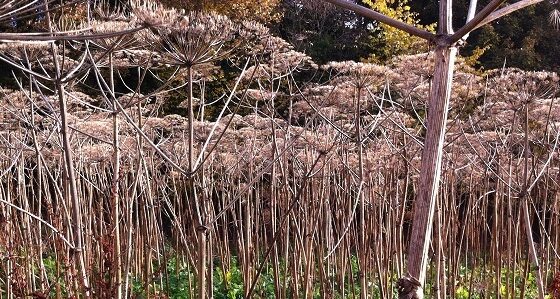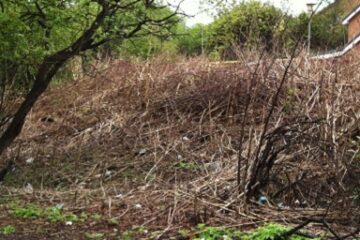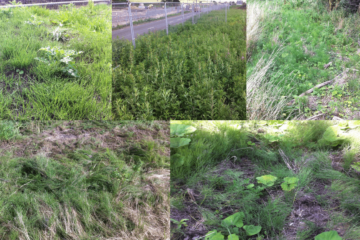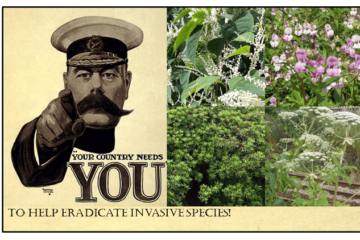With the warm late summer and mild days at the start of autumn seeming more and more like a distant memory, humans and animals are not the only things hunkering down to sit out the short cold days of winter ahead. The changing hues of the autumn leaves are the most obvious sign of this but it isn’t just broad leaf trees that look to conserve energy by shedding unnecessary growth, many plant species go through a process of die back in autumn and winter.
Amongst this group of plants are Giant Hogweed and Japanese Knotweed, Invasive species which can cause all sort of problems click here for more info. It’s now too late in the season to apply herbicide treatments but surely invasive species dying back in the winter is a good thing? Well, yes and no. In the case of Japanese Knotweed, winter die back does provide a brief respite in its seemingly inexorable spread but it’s not all good news, when the stems turn grey and dead they look woody and lose many of the plant’s characteristic features making it much more difficult to identify. If you’re doing a site walkover or carrying out any sort of excavation works it’s crucial to be highly vigilant and know what to look for because although the stem material is dead and presents little risk, unwittingly disturbing rhizome and crown material can cause the plant to spread just the same as in summer time. And if you do accidentally spread Japanese Knotweed through soil movements during the winter you probably won’t know about it until the plants burst forth in the spring by which time it’s too late to avoid the expense of dealing with it and possibly the prosecution which could follow.
A similar problem exists with Giant Hogweed, although here, its movement of the seeds which will spread the plants and the massive grey brown stem and empty seed heads which remain in winter are still fairly recognisable if they haven’t been blown over and lost amongst the leaf litter. However, due to Giant Hogweed’s preference for shaded habitats it is often much harder to spot in winter because it’s one grey brown woody plant stem amongst other grey brown woody plant stems.
Both Japanese Knotweed and Giant Hogweed are also commonly found along river banks and following winter die back, the lack of other plants in the vicinity can mean that there’s nothing to hold the banking together. So erosion is massively increased and any dead plant material which is washed downstream can cause blockages and floods. It’s also common when this sort of erosion takes place for viable knotweed material and Hogweed seeds to be washed downstream to form other colonies and thereby spread the problem.
If you want to know more about this or get someone to cast an experienced eye over the suspicious brown stalks in the corner of your land just give us a call.







Leave a Reply